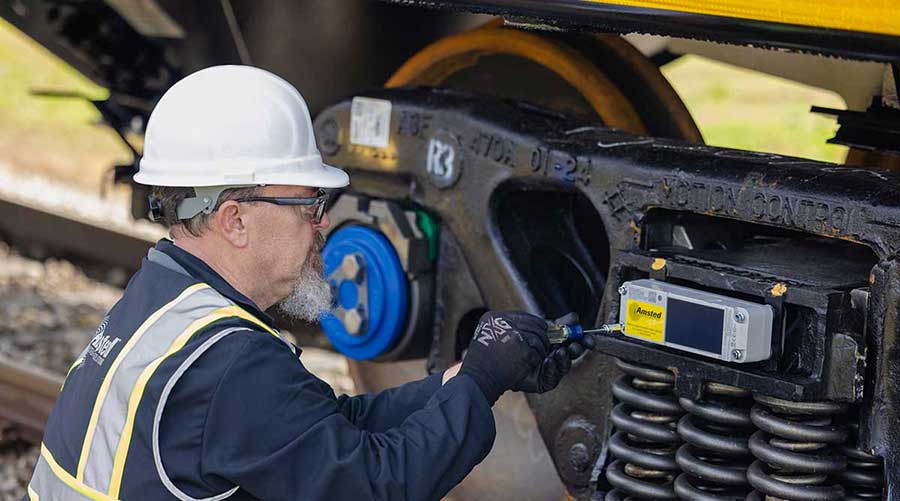Stay updated on news, articles and information for the rail industry
February 2009
Rail News: Rail Industry Trends
Tony Hatch: Capacity Crisis Could Emerge as Top Recovery Issue for Freight Shippers
Where is the world heading to? In one form or another, that question was on every investor’s, rail manager’s and customer’s lips as we staggered into 2009. There remain several schools of thought out there, most of them negative judging by the harsh and consistent questioning of railway management in last month’s 4Q review/’09 preview conference calls.
But just maybe, there is a ray of hope that the worst, both seasonally and, more important, cyclically, may be occurring this winter. Among the views out there:
Straightline — Both on the up and now the downside, we all can get trapped simply projecting out current conditions into the future, which (only) partially explains the shock of the economic and industrial (thus, volume) collapse after Thanksgiving.
However, many folks (perhaps battered by the unceasing bad news out of the markets, etc.) are now assuming the worst goes on indefinitely and forget that this too, shall pass.
Unclear — This position makes some sense ... more companies are giving no earnings guidance, from GE to the rail group collectively, since they simply have no intermediate-term clarity, and no real help from customers. One response is to prepare for the worst — reduce asset exposure, cut variable costs and hoard cash. One by-product of flexibility is that, if followed universally, it helps promote reduced output (“the only thing to fear is ...”) and appears to validate the Straightline school of thought.
Strategic — This is the view of those who remember the lessons of 2003-04. At the time, those with capacity, who had supposedly “over-spent” and “gold-plated” their systems into the 1999-2001 recession, were able to handle the violent but positive shock wave of traffic, across virtually all of the commodity groups, that hit the rail industry in late 2003.
Those who thought too tactically, who too closely matched capex to (what turned out to be unduly pessimistic) perceived volume forecasts and were caught without capacity, saw instant congestion and even had to embargo traffic, and play years of expensive catch-up.

|
||
| Tony Hatch | ||
| The last upturn was a surprise, and while several rails were caught short, the freight system as a whole handled the growing economy. We may not be so lucky this time. |
That lesson is the one that appears to be prevailing today with the announcements of strategically reduced capex that don’t shirk on MOW, and might call for parking fleet and furloughing some T&E workers, but have a “ready plan” for when the cycle bottoms.
Shortage? — The last upturn was a surprise, and while several rails were caught short, the freight system as a whole struggled but was able to handle the growing economy. We may not be so lucky this time. Although the rails are thinking strategically as noted, the truckers can’t and are shedding capacity at all-time-high rates, relieved only by what should be the temporary respite from fuel prices.
Class 8 truck sales, heading into a new engine-emissions year, are non-existent, and big fleets are down 10 percent to 40 percent as the smarter and more sophisticated truckload carriers become true bi-modal players (the shining example is, of course, the pioneer, JB Hunt).
Infrastructure may be addressed somewhat by the stimulus and other packages, but still it’s clear that the overall continental freight system has less flex capacity than it entered the last cycle with.
When will we see bottom? — The answer to that trillion-dollar question is critical, but as yet unknowable. However, there are emerging hints that while the turn may remain a mystery, the bottom may be showing itself now, this winter, when the rails and the nation endure the combined seasonally and, perhaps cyclically, weakest time.
Dozens of auto and other industrial plants are closed for extended holiday shutdowns along with those permanently shuttered, and inventories drawn down when demand fell off a cliff are now reaching all-time lows.
There are emerging signs of life in steel, chemicals and utilities. I am not sure when things are going to get better (who is?), but increasingly, among blizzards of bad economic news (and of real sleet), I see emerging signs that perhaps it isn’t going to get any worse. 
Tony Hatch is an independent transportation industry analyst and consultant


 2025 MOW Spending Report: Passenger-rail programs
2025 MOW Spending Report: Passenger-rail programs
 Gardner steps down as Amtrak CEO
Gardner steps down as Amtrak CEO
 Guest comment: Oliver Wyman’s David Hunt
Guest comment: Oliver Wyman’s David Hunt
 Women of Influence in Rail eBook
Women of Influence in Rail eBook
 railPrime
railPrime





